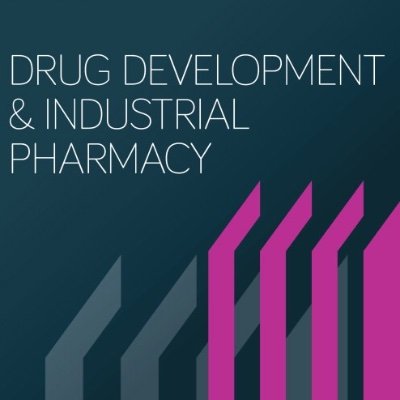通过明胶纳米颗粒给药增强利福昔明的抗菌活性
IF 2.4
4区 医学
Q3 CHEMISTRY, MEDICINAL
引用次数: 0
摘要
目的 细菌感染是一个值得关注的全球健康问题,因此有必要开发新的策略来提高抗生素的效力和疗效。利福昔明(RFX)是一种广谱抗生素,对多种细菌菌株具有良好的抗菌活性。然而,它的不溶性和不渗透性阻碍了对其潜力的充分挖掘。本研究的目的是克服 RFX 的固有缺陷,以充分挖掘其潜力。本研究是一项初步研究,旨在最大限度地利用 RFX 在目标部位的作用,并减少其未代谢形式的释放。方法明胶是一种生物聚合物,由于其固有的生物相容性和生物降解性,在生物医学应用方面获得了极大关注。本研究采用自组装方法制备了牛明胶纳米颗粒(BGNPs),并将其用作 RFX 的载体,以增强其抗菌活性。研究采用了一系列实验技术来表征所制备的 BGNPs,如 DLS、Zeta 电位、傅立叶变换红外光谱、原子力显微镜、扫描电镜-电子显微镜和紫外-可见分光光度法。在 BGNPs 上添加 RFX 后,其尺寸增加到 136 nm,zeta 电位值为 -16 mV。体外试验和显微分析比较了 RFX 和 RFX@BGNPs 的抗菌效果。RFX@BGNPs 具有出色的负载能力,并能持续释放 RFX,从而显著提高了药效。RFX@BGNPs 中 RFX 的释放遵循 Higuchi 和 Korsmeyer-Peppasmodels 模型。通过抑制和生物膜抑制实验评估,RFX 通过 RFX@BGNPs 释放后对金黄色葡萄球菌的抗菌效果提高了一倍。对照组和处理过的细菌菌落的扫描电镜和显微镜成像进一步证实了抗菌效率的提高。本文章由计算机程序翻译,如有差异,请以英文原文为准。
Enhancement in the Antibacterial Activity of Rifaximin by Delivery through Gelatin Nanoparticles.
OBJECTIVES
Bacterial infections are a noteworthy global health concern that necessitates the development of new strategies to enhance the potency and efficacy of antibiotics. Rifaximin (RFX), a broad-spectrum antibiotic, exhibits promising antibacterial activity against several bacterial strains. However, its insolubility and impermeability impede the exploitation of its full potential. The objective of the current study is to overcome the inherent caveats of RFX in order to exploit its maximum potential.
SIGNIFICANCE
The exploitation of the full potential of antibiotics is necessary for reduction in their dosage and to minimize antibiotic pollution. This is a preliminary study aiming for maximum utilization of RFX at the target site and reduction in its release in unmetabolized form.
METHODS
Gelatin is a biopolymer that has gained significant attention for biomedical applications owing to its inherent biocompatibility and biodegradability. In this study, bovine gelatin nanoparticles (BGNPs) were fabricated by the self-assembly method for their application as a carrier of RFX to enhance its antibacterial activity. The study employs a comprehensive range of experimental techniques to characterize the fabricated BGNPs such as DLS, Zeta Potential, FT-IR, AFM, SEM-EDX, and UV-Vis spectrophotometry.
RESULTS
The average size of the fabricated BGNPs was 100 nm with a zeta potential value of -15.3 mV. The loading of RFX on BGNPs rendered an increase in its size to 136 nm with a zeta potential value of -16 mV. In-vitro assays and microscopic analyses were conducted to compare the antibacterial efficacy of RFX and RFX@BGNPs. An excellent loading capacity followed by sustained release of RFX from RFX@BGNPs rendered a significant enhancement in its pharmaceutical efficacy. The release of RFX from RFX@BGNPs followed the Higuchi and Korsmeyer-Peppasmodels. The antibacterial efficacy of RFX against Staphylococcus aureus has doubled by delivery through RFX@BGNPs, assessed by inhibitory and biofilm inhibitory assays. The enhancement in the antibacterial efficiency was further endorsed by SEM and microscopic imaging of the control and treated bacterial colonies.
CONCLUSION
The study demonstrates an enhancement in the antimicrobial efficacy of RFX by its delivery in the form of RFX@BGNPs to exploit its full potential for practical applications.
求助全文
通过发布文献求助,成功后即可免费获取论文全文。
去求助
来源期刊
CiteScore
6.80
自引率
0.00%
发文量
82
审稿时长
4.5 months
期刊介绍:
The aim of Drug Development and Industrial Pharmacy is to publish novel, original, peer-reviewed research manuscripts within relevant topics and research methods related to pharmaceutical research and development, and industrial pharmacy. Research papers must be hypothesis driven and emphasize innovative breakthrough topics in pharmaceutics and drug delivery. The journal will also consider timely critical review papers.

 求助内容:
求助内容: 应助结果提醒方式:
应助结果提醒方式:


